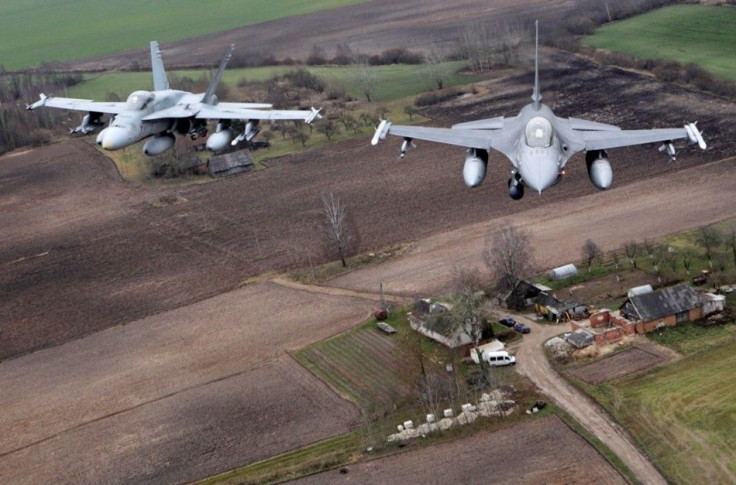US Navy Conducts First Ever Aerial Refuelling of Carrier-Launched Drone: Big Boost For Navy's Upcoming UCLASS Strikers

The U.S. Navy made a big stride in its technological innovation by successfully executing a mid-air aerial refuelling of its X-47B carrier based drone aircraft controlled by Patuxent River Naval Air Station. The X-47B, built by Northrop Grumman, was refuelled by an Omega Air Refuelling Tanker mid-air, according to the Navy officials.
Challenging Task
During the drone's flight along the eastern coast of the United States, the unmanned prototype X-47B approached a tanker aircraft, snagged its refuelling boom and received adequate fuel. “In manned platforms, aerial refuelling is a challenging manoeuvre because of the precision required by the pilot to engage the basket,” said Captain Beau Duarte. He noted that any autonomous functionality will only add to the complexity and success in mid-air refuelling asserts the technological superiority.
The X-47B is a stealth drone designed for use on aircraft carriers and answers the Navy’s search for an intelligence drone capable of spending uninterrupted hours in the air, collecting information. The X-47B is powered by a stealthy jet engine and it has a wingspan of 62 feet or 19 metres, adds the report.
For Joint Combat
The successful refuelling of the X-47B also coincides with Pentagon’s review of the Navy’s next-generation carrier-launched unmanned drone works to make sure whether the new platform is absolutely suited for a joint combat environment. The ongoing Pentagon review is evaluating intelligence, surveillance and reconnaissance, or ISR, and the desired attributes for the Navy’s Unmanned Carrier Launched Aircraft Surveillance and Strike system, or UCLASS. The Navy is testing X-47B as a demonstrator platform to augment the development of its UCLASS systems.
Earlier Feats
The U.S Navy has already had success from the prowess of X-47B. In August 2014, it launched and landed the X-47B in rapid succession with an F/A-18 fighter jet, as part of a joint manned and unmanned flight tests aboard the USS Theodore Roosevelt off the coast of Norfolk. After an eight minute flight, the X-47B executed an arrested landing, folded its wings and taxied out of the landing area and moved out so as to give space for an F/A-18 to land, claimed the Navy officials. Now the Navy engineers have added more modifications to the X-47B aircraft, to make it both land and integrate in rapid succession with other fixed-wing fighter jets.
(For feedback/comments, contact the writer at k.kumar@ibtimes.com.au)





















